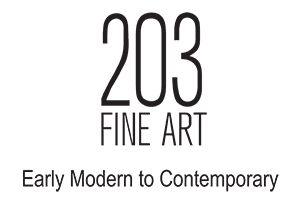An Early O'Keeffe Offering
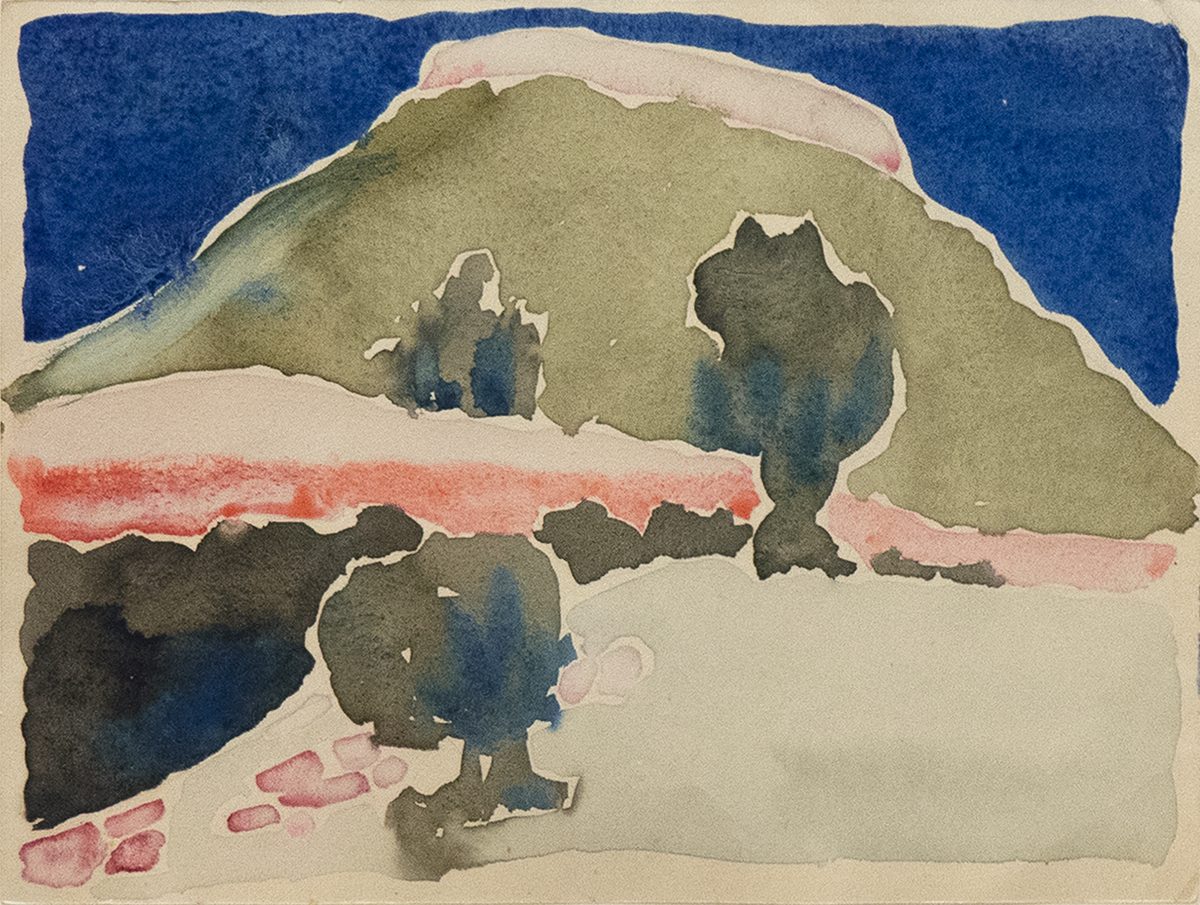
Pink and Green Mountain 1917,
8.75 x 12, watercolor on paper
Provenance:
Property from the Estate of Betty Melaver, Savannah, GA Estate of the artist, 1986; Private collection, 1987 (Owings-Dewey Fine Art, Santa Fe, New Mexico); Private collection, Savannah, Georgia, 1990.
Exhibitions:
1977 San Francisco, no. 3; Savannah Collects exhibition, October 3, 2014-January 5, 2015, Telfair Museums, Savannah, GA.
Condition:
Very good condition. Recently re-framed in O'Keeffe style hand-gilded white gold molding under optimum museum plexiglass.

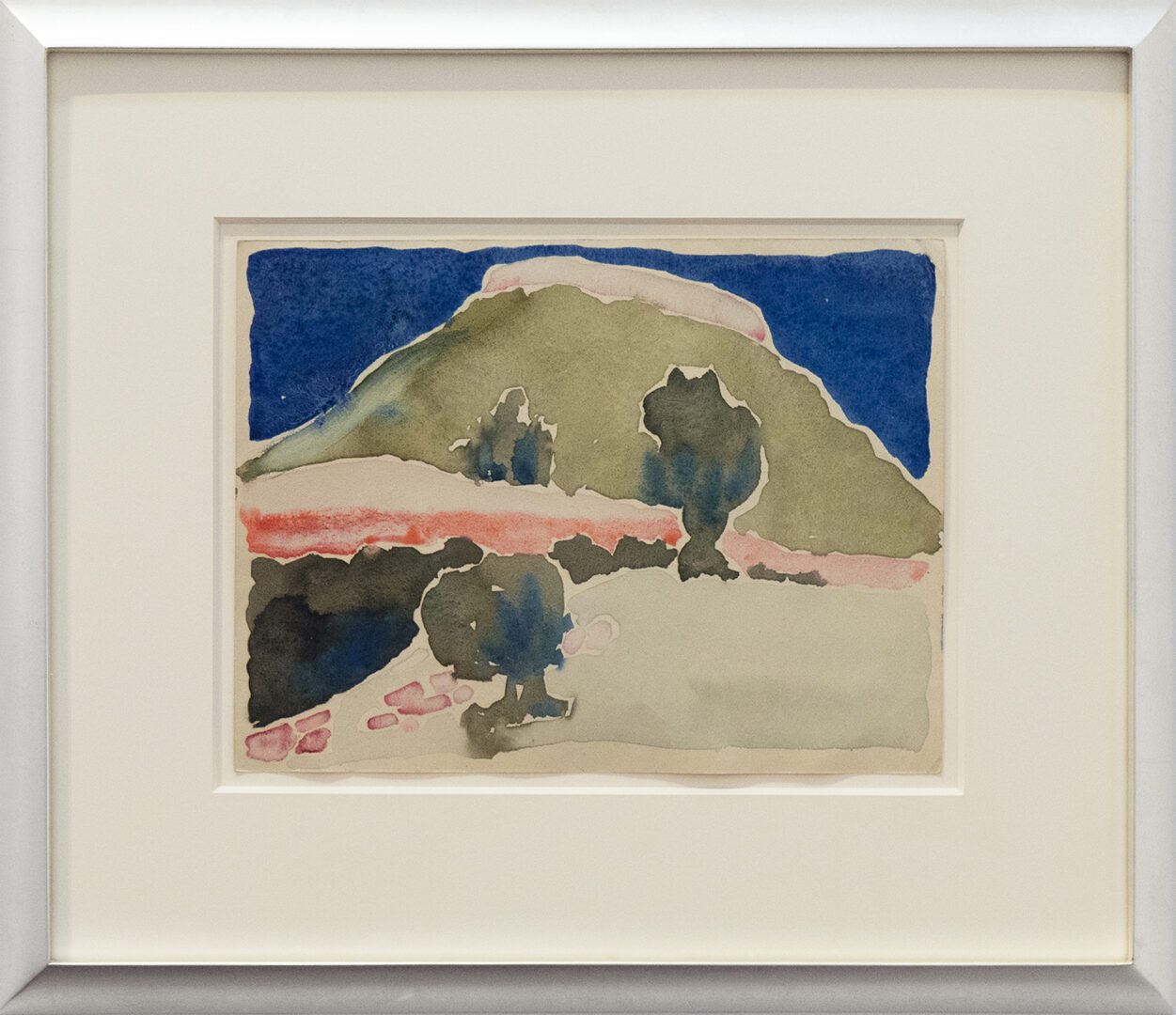
203 Fine Art is pleased to present a rare offering by Georgia O'Keeffe, Pink and Green Mountain 1917, an early-career watercolor painting depicting a West Texas landscape completed in Colorado in August 1917, of which only a few survived.
Similar important works on paper from this early period by O’Keeffe are the focus of the current exhibition at MoMA in New York until August 12, 2023. One of the only watercolor paintings by O'Keeffe currently on the market from this time period, this is an exceptional opportunity to own a scarce historically significant early work by one of the most important American Modernists. While unsigned, as are many, this artwork is listed in the catalogue raisonné as item 196.
Schools of Study
Art Institute of Chicago, Chicago, IL 1905-06
Art Students League, New York, NY 1907-08
Partial List of Collections
Metropolitan Museum of Art, New York, NY
National Gallery of Art, Washington, D.C.
Museum of Modern Art, New York, NY
Whitney Museum, New York, NY
Smithsonian Institute, Washington, D.C.
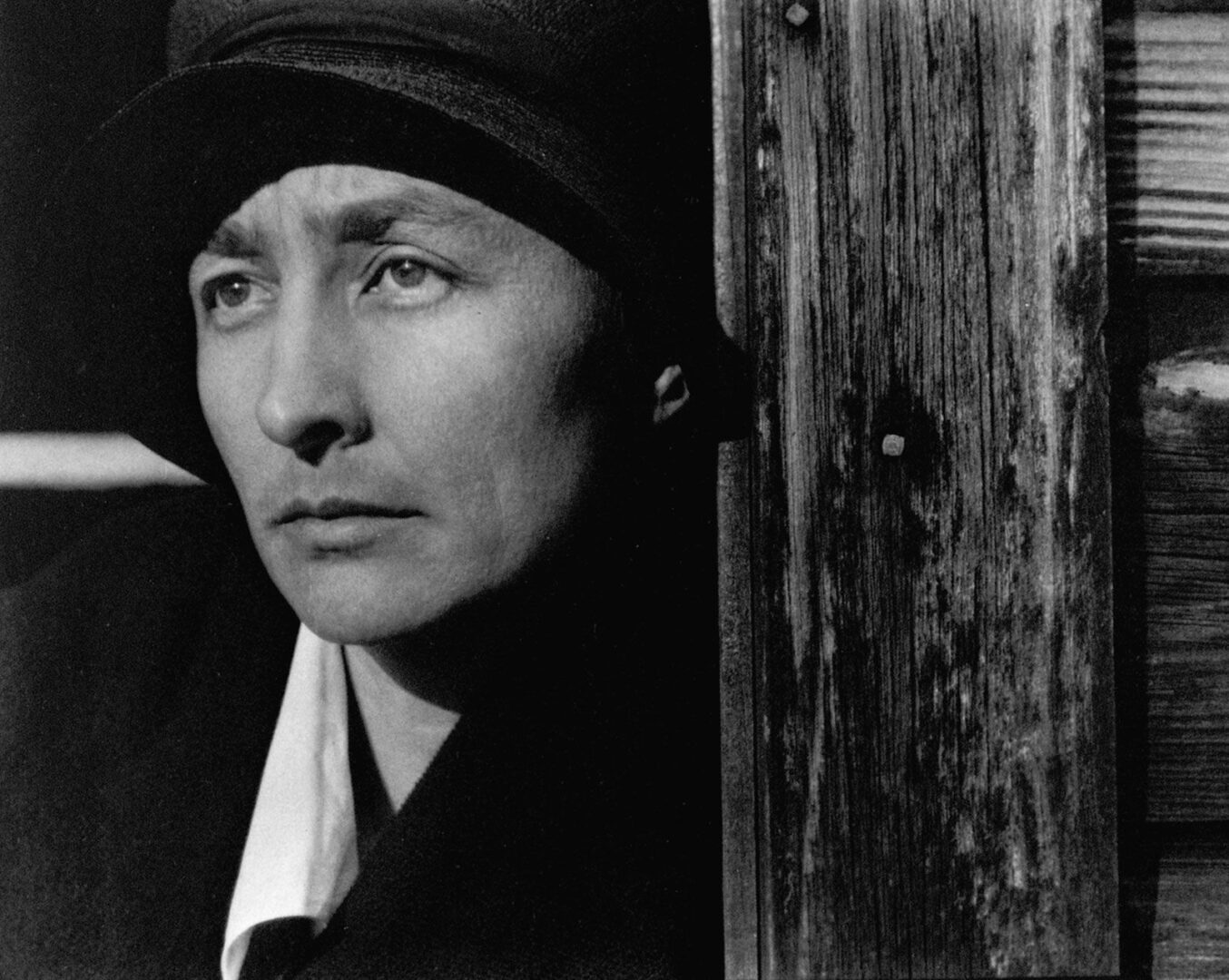
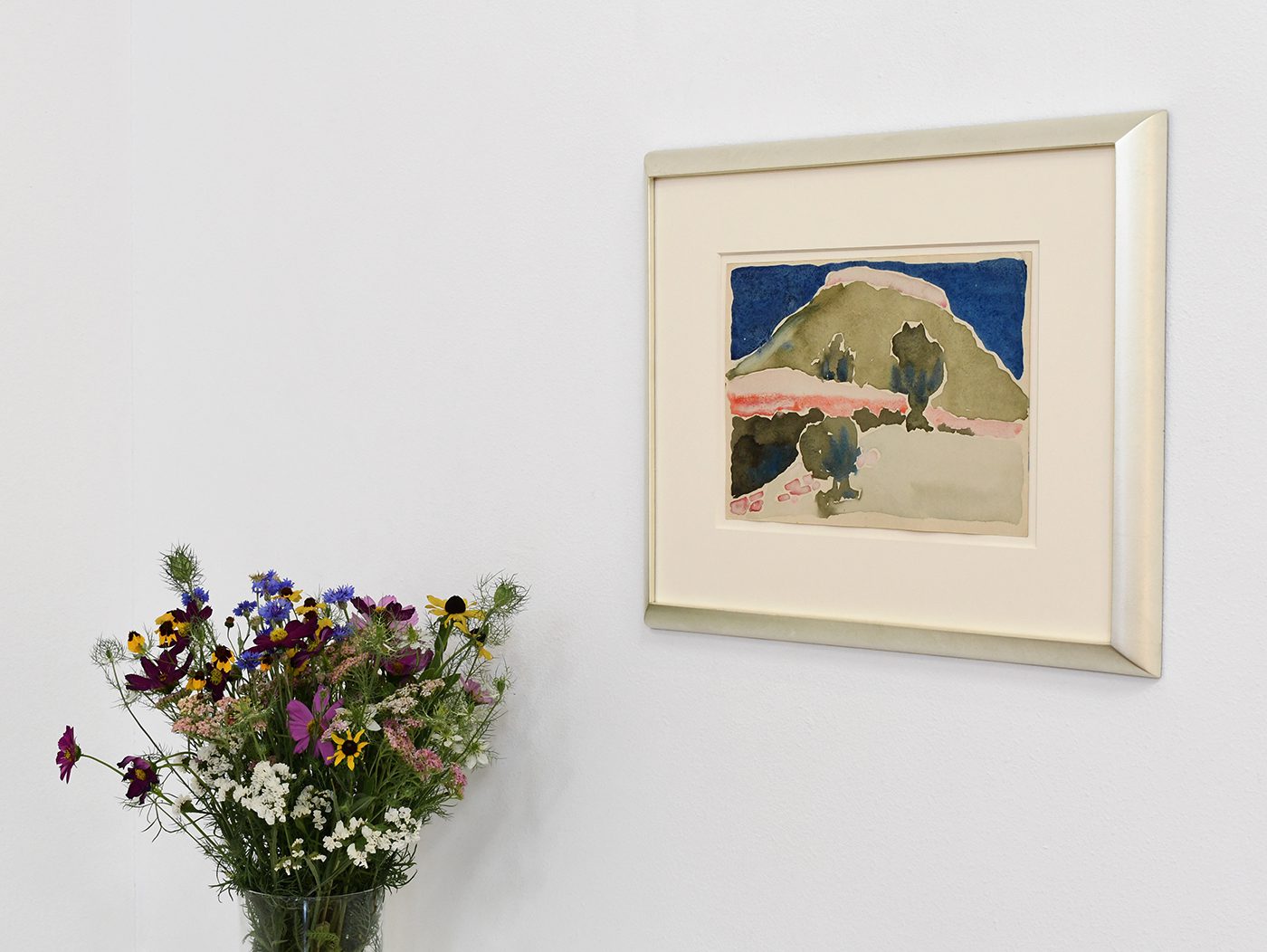
Biography
Georgia O'Keeffe was born in 1887 in rural Wisconsin. She decided to become an artist at an early age and attended the Art Institute of Chicago and the Art Students League in New York. After teaching art in schools in Texas and South Carolina for several years, she began corresponding with the photographer and gallerist Alfred Stieglitz.
In 1917 she had a solo exhibition at Stieglitz's Gallery 291, and in 1918 she moved to New York. Following Stieglitz's divorce in 1924, she and Stieglitz married and began spending the summers at Lake George with Stieglitz's family. However, New York had lost its appeal for her and she began to travel more frequently on her own.
She made her first journey to New Mexico in 1929, staying with Mabel Dodge Luhan in Taos. The Southwest had a profound influence on her, and the work she created at Ghost Ranch and her home in Abiquiu have become inextricable from her legacy as an artist.
This painting is a part of O’Keeffe's Pink and Green Mountain series completed in Colorado in August of 1917. While the artist was in Colorado during the completion of this series, the subject matter is a representation of the land surrounding her West Texas home. The forms derive from landscape configurations in and around Palo Duro Canyon, near Canyon, Texas, where O'Keeffe lived from the fall of 1916 to February 1918.
However, one may easily mistake this painting for a landscape O'Keeffe would have created while living in Abiquiui, New Mexico, of the looming landforms she painted many times at Ghost Ranch. It is apparent these isolated, desert structures have been a source of inspiration for the artist throughout her career.
This artwork remained within O'Keeffe's personal possession until she passed in 1986. It was then collected, going on to be exhibited in Santa Fe at Owings-Dewey Fine Art in 1987 and again at the Telfair Museum, Savannah, GA, 2014-2015.
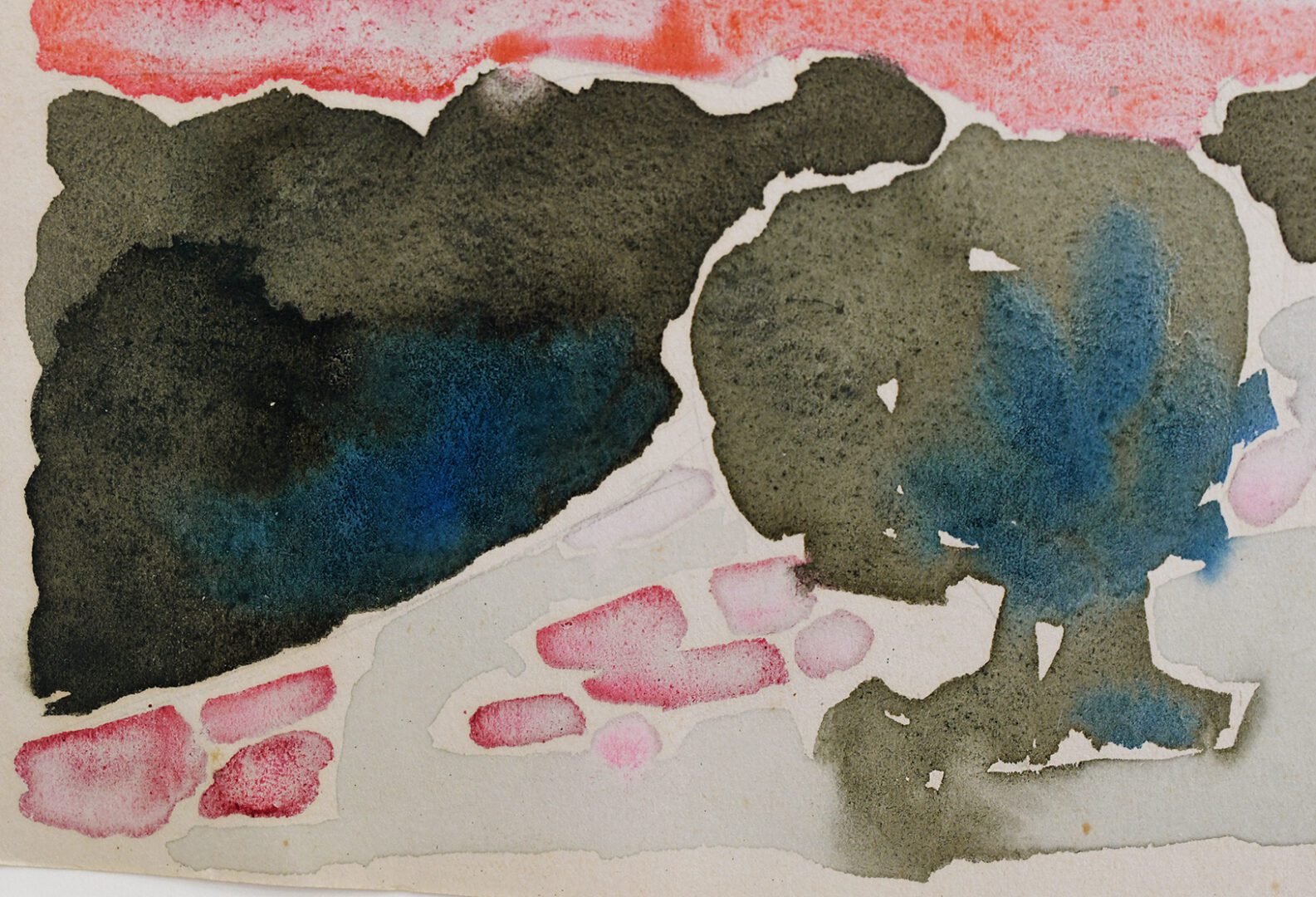
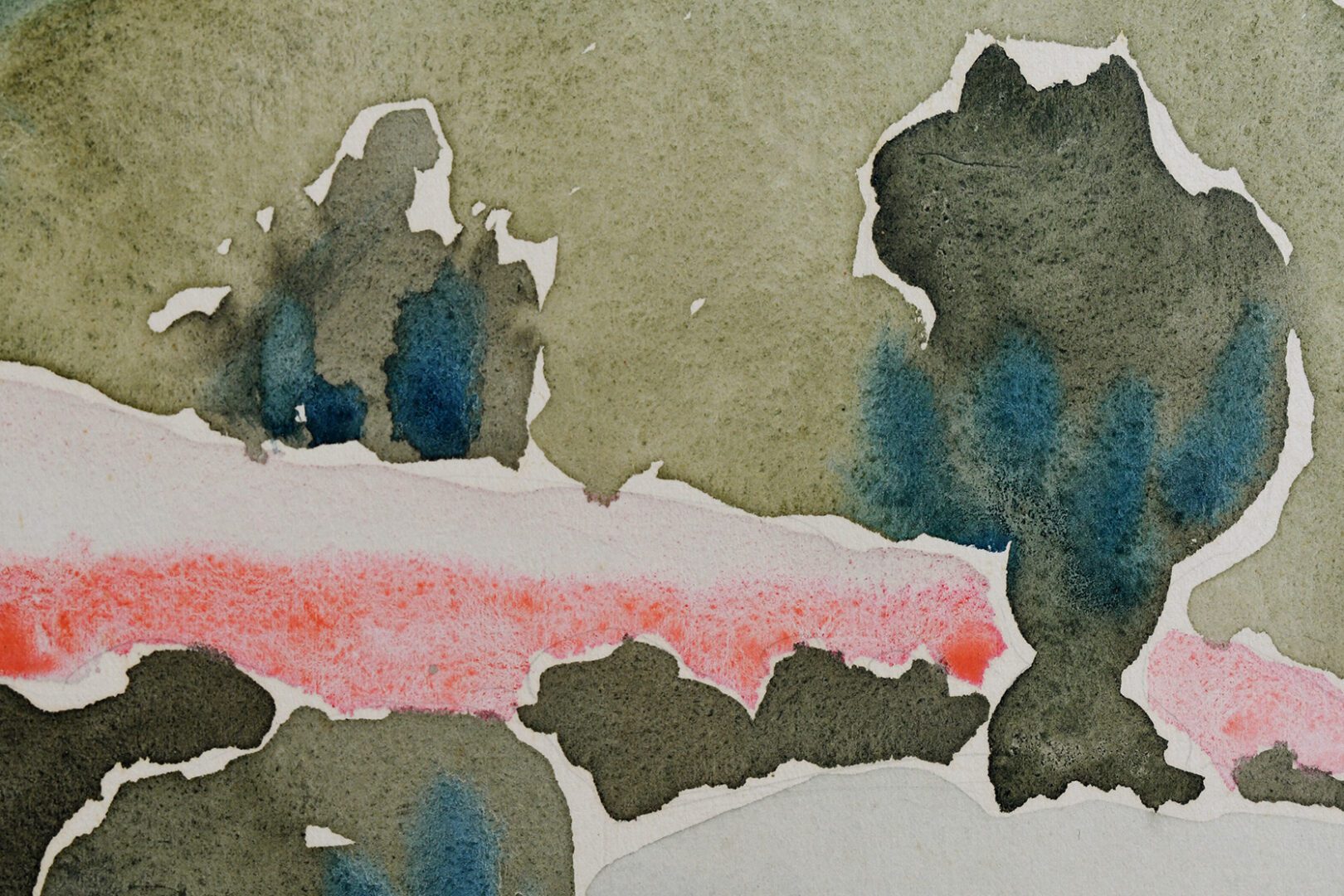
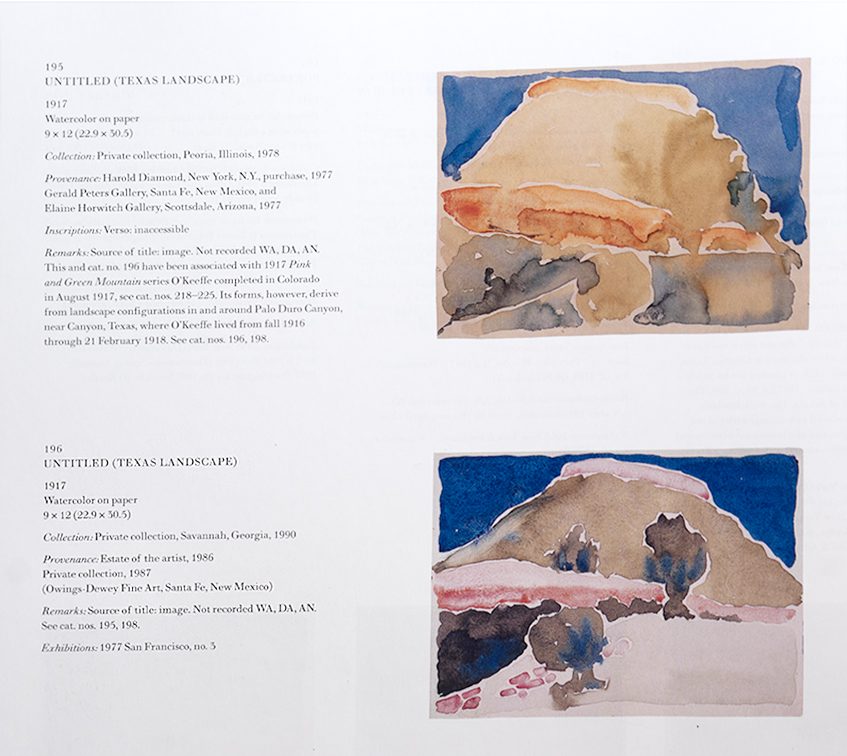
"O'Keeffe lived in Amarillo, Texas from 1912 to 1914, but the catalogue raisonné has very few works listed for those years. Most were probably lost or destroyed...
There are approximately 125 objects that date from the summer of 1916, when O'Keeffe moved to Canyon, Texas, until the summer of 1918, when she moved to New York City. These include works she created in Colorado and the San Antonio area. It is not known how much art from 1916 to 1918 did not survive after the move to New York.
"When I knew I was going to stay in New York, I sent for things I had left in Texas. They came in a barrel and among them were all my old drawings and paintings. I put them in with the wastepaper trash to throw away and that night when Stieglitz and I came home after dark the paintings and drawings were blowing all over the street. We left them there and went in. But I remember a large watercolor of many hollyhocks sticking out of a big wastecan." Georgia O'Keeffe by Georgia O'Keeffe. New York: Viking Press, 1976, unpaginated, text accompanying Plate 16." - West Texas A&M University
Opposite: Image of the O'Keeffe catalogue raisonné, volume 1, page 114, images 195 and 196.
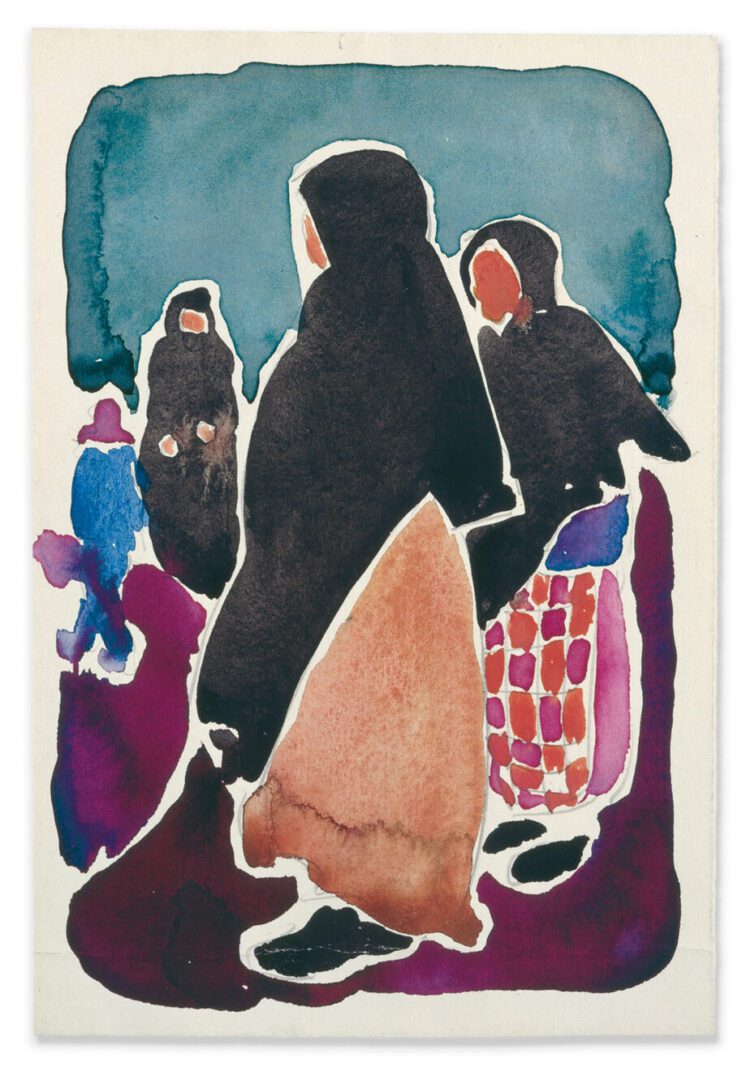
"The paintings are too delicate to be exhibited and therefore have been left out of many O’Keeffe retrospectives. What’s more exciting than discovering something new about a familiar artist?"
Today we don’t think of O’Keeffe primarily as a watercolorist. Yet it was one of the first mediums she mastered, first in her childhood in Sun Prairie, Wisconsin and then during her training with Arthur Wesley Dow. Much of O’Keeffe’s early work (from the 1910s) was in watercolor, the fluidity of the paint allowing her to experiment with light and color as well as the depiction of space.
But by the end of the decade, she switched to oil, a change that allegedly was due to the influence of her soon-to-be husband, Alfred Stieglitz. According to Stieglitz, watercolors were for amateurs and women. (We respectfully disagree).
These works are also one of O’Keeffe’s first forays into abstraction. She once described her own artistic evolution by saying she “decided to start anew, to strip away what I had been taught.” In her watercolors, she takes a bold step towards a style that will later give her the name “the Mother of American Modernism”.
-Louisa Mahoney, Cabinet of Curiosities, 2022
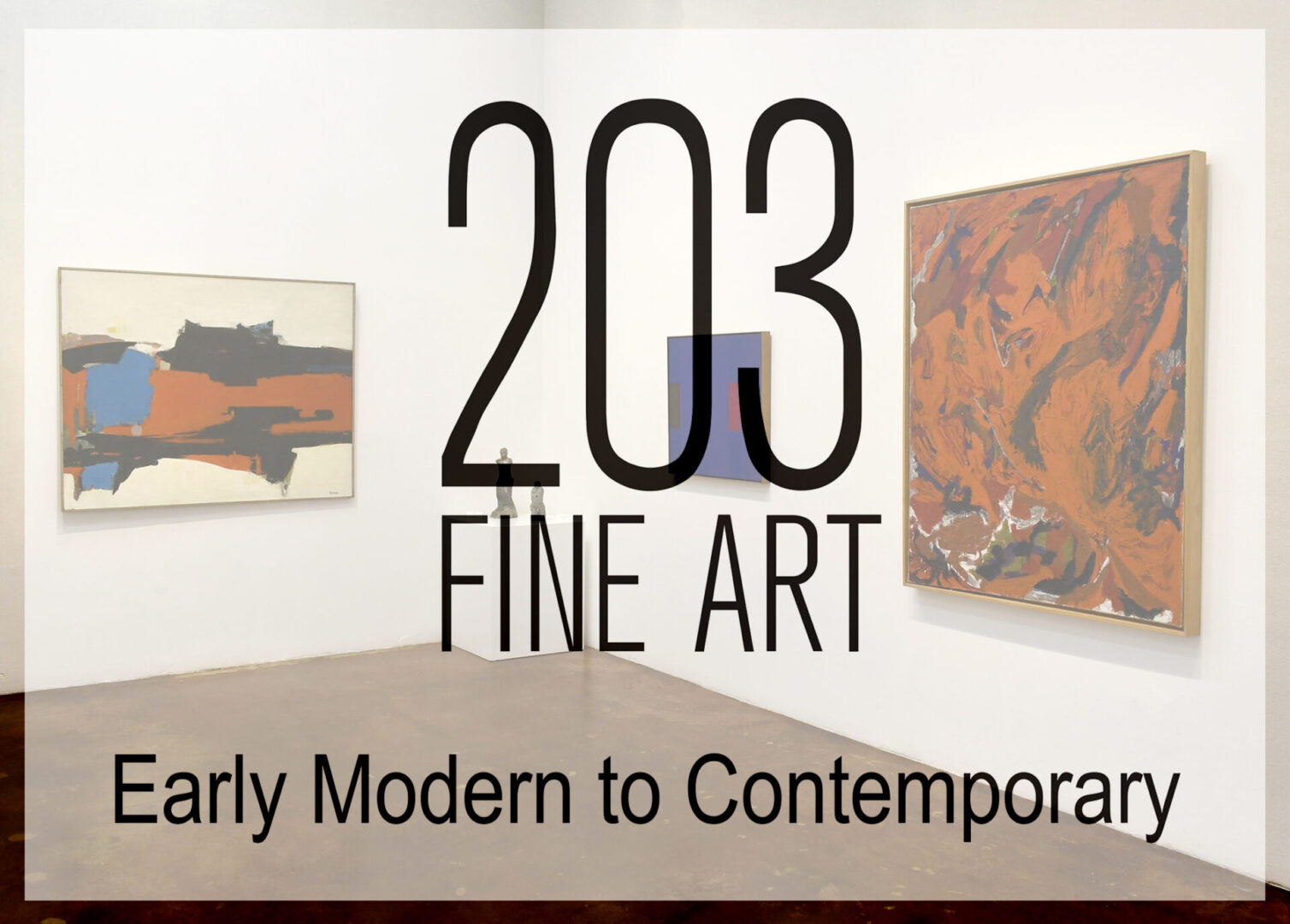
203 Fine Art was established in 2006 by artists Eric Andrews and Shaun Richel, with the vision of founding a venue for contemporary art in the traditionally inclined art landscape of Taos, New Mexico. As an artist-owned gallery, 203 Fine Art's selection of offerings is curated with an artist's eye for truly quality works.
Richel and Andrews have a wide range of knowledge in contemporary, regional historic traditional and modern art, the Taos Moderns, Los Angeles 1960s Cool School, New York and San Francisco Abstract Expressionist movements. These historic art movements have significantly influenced the artists who lived and worked in Taos from the 1940s onward. Through years of research and community encounters, many of these artists have become the focus of our gallery's knowledge.
Sign up for exhibition announcements and updates.
